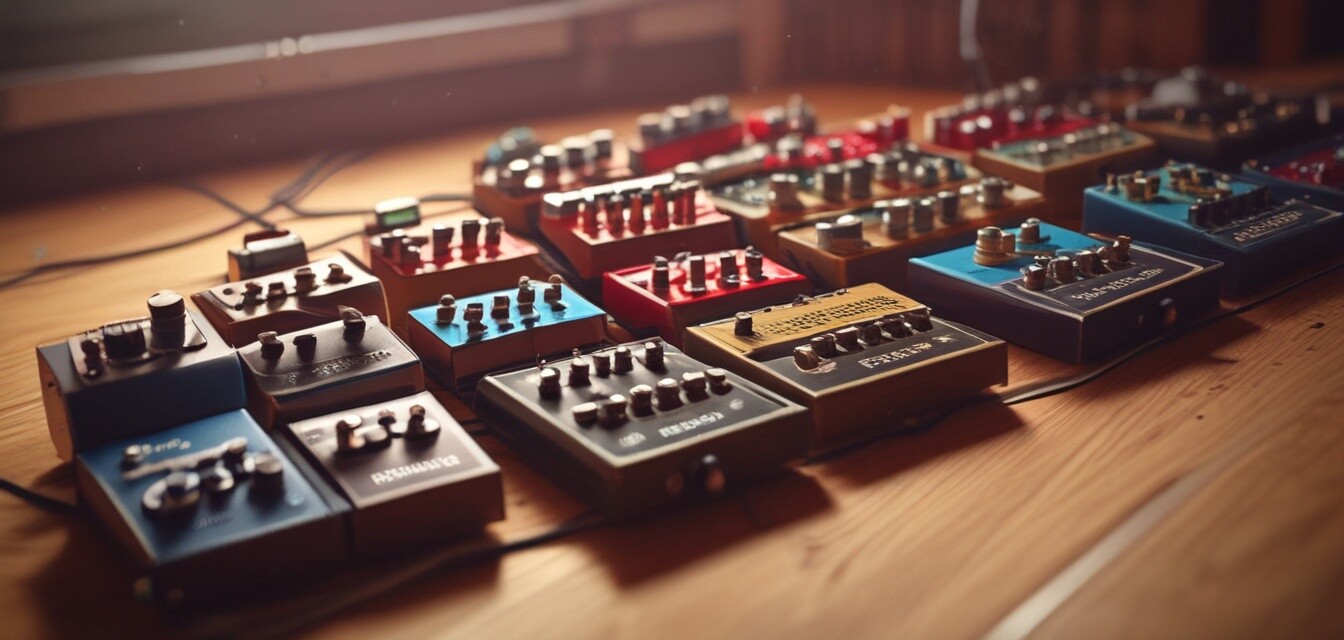
Understanding Guitar Effects: A Guide for Fender Players
- Guitar effects pedals can dramatically enhance your sound.
- Different types of effects, such as delay, reverb, and distortion, serve unique purposes.
- Choosing the right effects can depend on your playing style and the music genre.
- Experimenting with combinations can lead to personalized tones.
- Proper placement in your signal chain is crucial for optimal sound.
Guitar effects pedals play an essential role in shaping the tone and creativity of Fender players. This guide will walk you through various types of effects pedals, their purposes, and how to integrate them into your playing for enhanced sound. Understanding these elements will empower you to make informed decisions that resonate with your musical style.
What Are Guitar Effects Pedals?
Guitar effects pedals are electronic devices that modify the sound of your guitar along with your Fender amplifier. They can create diverse sounds ranging from subtle enhancements to wild sonic transformations. By altering signal characteristics, these pedals enable guitarists to explore various textures and atmospheres in their music.
Types of Guitar Effects Pedals
There is a plethora of guitar effect types available, and understanding their functions can help you choose the right ones for your sound. Here’s a breakdown of common types:
| Effect Type | Description | Common Uses |
|---|---|---|
| Overdrive/Distortion | Amplifies the signal and adds warmth and grit. | Rock, blues, and many other genres. |
| Delay | Records the input signal and plays it back after a set time. | Creating echo effects and depth. |
| Reverb | Simulates the natural reflections of sound in different environments. | Adding space and ambiance to your playing. |
| Chorus | Splits the original signal, slightly modifies it, and mixes it with the original. | Thicker, fuller sound for clean tones. |
| Wah-Wah | A filter effect controlled by a pedal that emphasizes certain frequencies. | Expressive sound, often used in funk and rock. |
How to Choose the Right Effects
When considering which effects pedals to add to your rig, it's important to think about:
- Your musical genre and style.
- Your current amplifier setup (see our Guitar Amplifiers section for more information).
- The types of sounds you want to create.
- Your budget and available space for pedals.
Experimenting with Your Sound
Don't hesitate to experiment with different combinations of effects pedals. Here are some tips:
- Start with a basic setup: Overdrive, Delay, and Reverb.
- Add more pedals gradually and listen to how they interact.
- Try different arrangements in your pedal chain; placement matters!
- Keep a journal of your presets and settings for future reference.
Signal Chain Essentials
The order of your pedal effects can drastically affect your sound. A typical signal chain might look something like this:
| Order | Effect | Importance |
|---|---|---|
| 1 | Tuner | Tuning your guitar before effects adds clarity. |
| 2 | Overdrive/Distortion | Allows for more dynamic sound shaping at the start. |
| 3 | Chorus | Adds depth before modulation effects. |
| 4 | Delay | Creates ambience after modulation effects. |
| 5 | Reverb | Finalizes the sound with space and ambiance. |
Maintaining Your Effects Pedals
Regular maintenance of your effects pedals is vital for consistent performance. Consider the following tips:
Beginner’s Tips for Effects Pedal Care
- Keep your pedals in a dry, cool place.
- Use a power supply if possible to avoid battery issues.
- Replace cables regularly to ensure clean signal flow.
- Clean the input and output jacks with a soft cloth to avoid dirt buildup.
Conclusion
Understanding and experimenting with guitar effects can transform your sound and make your Fender guitar experience even more enjoyable. By considering the types of effects, the right order in your signal chain, and maintaining your pedals, you will unlock new levels of creativity and self-expression in your music.
Pros
- Diverse sound possibilities
- Enhances musical creativity
- Customizable effects to fit personal style
- Can be integrated easily into your setup
Cons
- Can become expensive
- Setup complexity may intimidate beginners
- Requires regular maintenance
- Possible signal degradation if not set up correctly
For more resources, feel free to check our Buying Guides or our News and Trends sections for the latest on guitar gear.